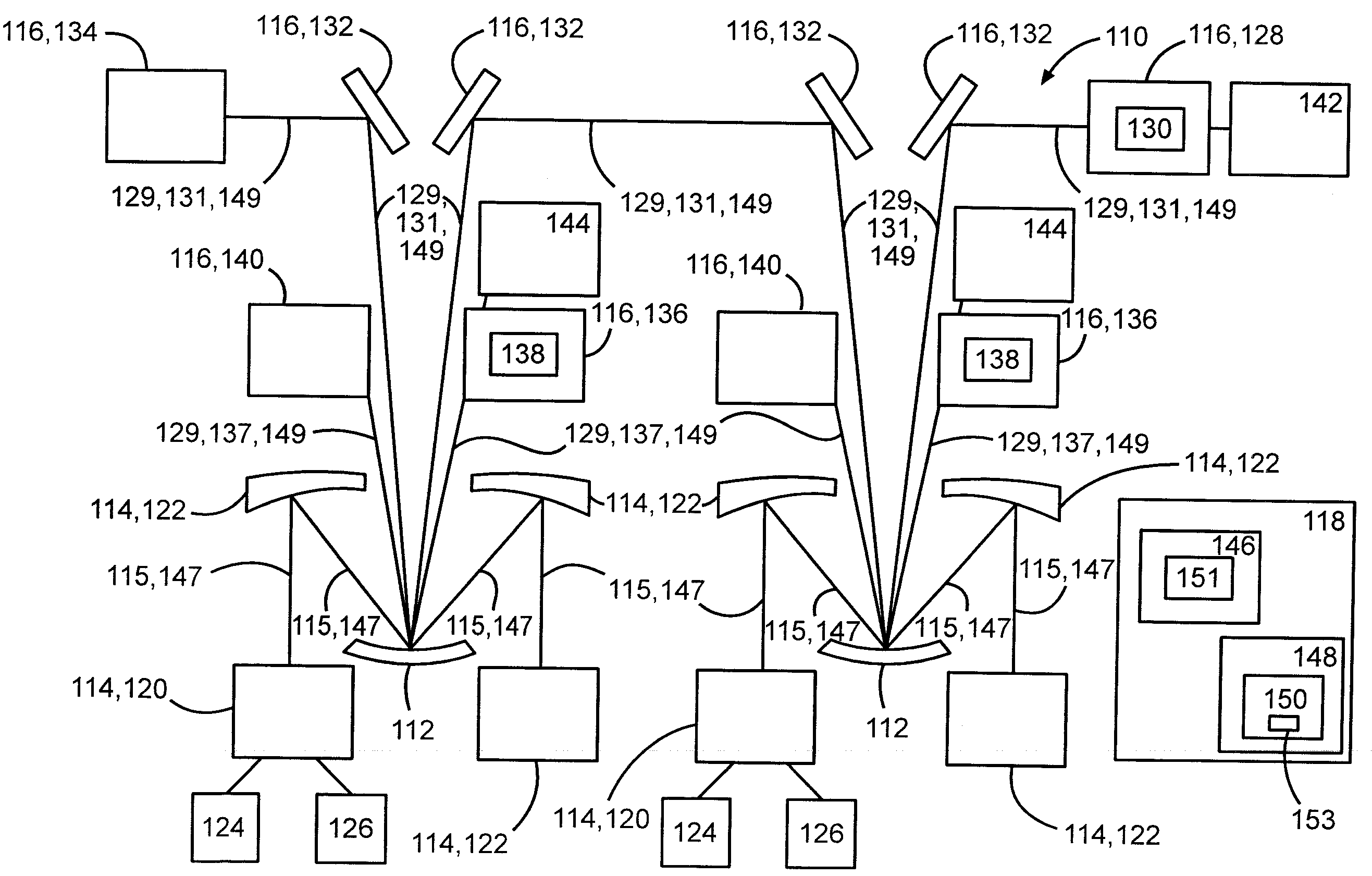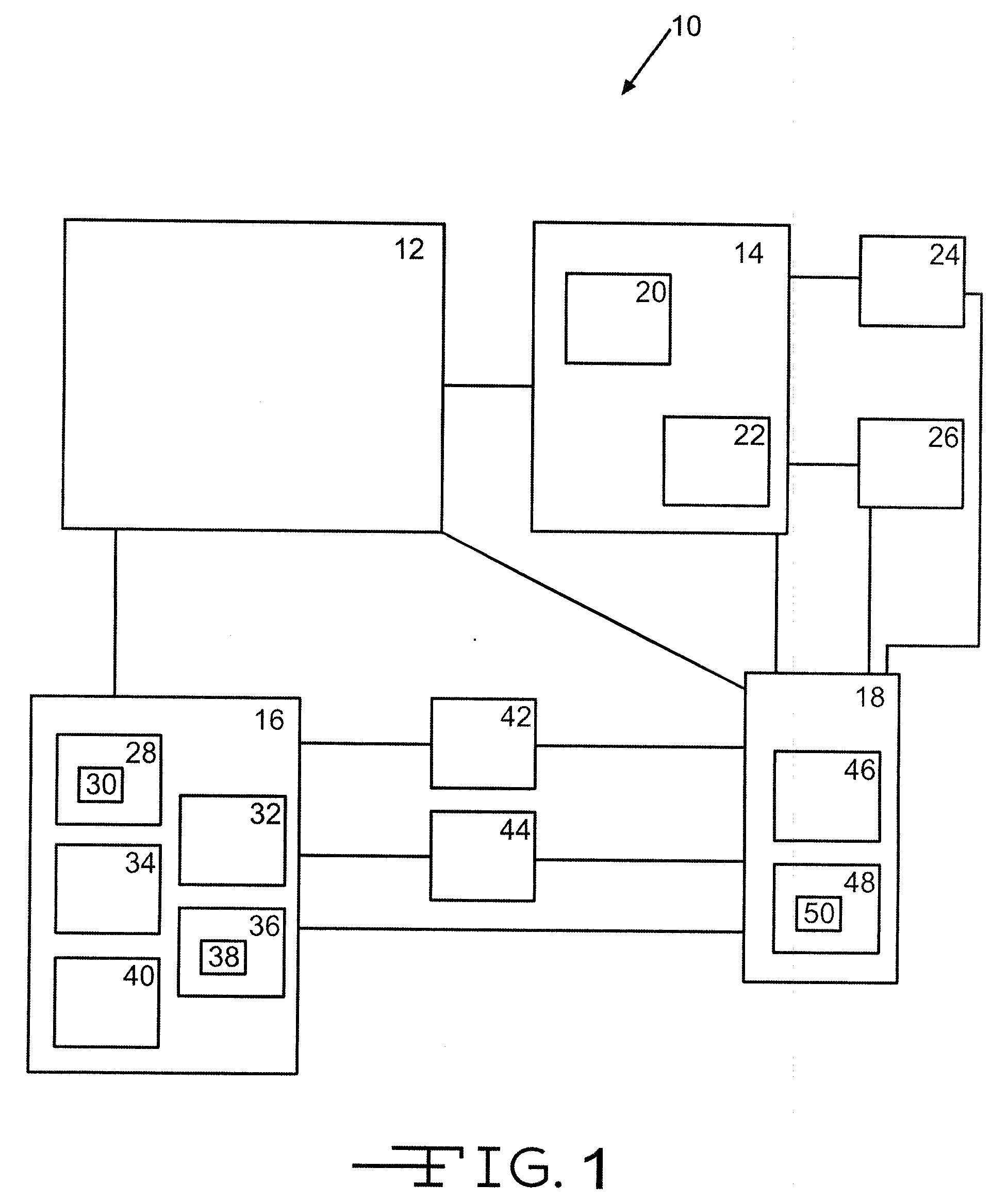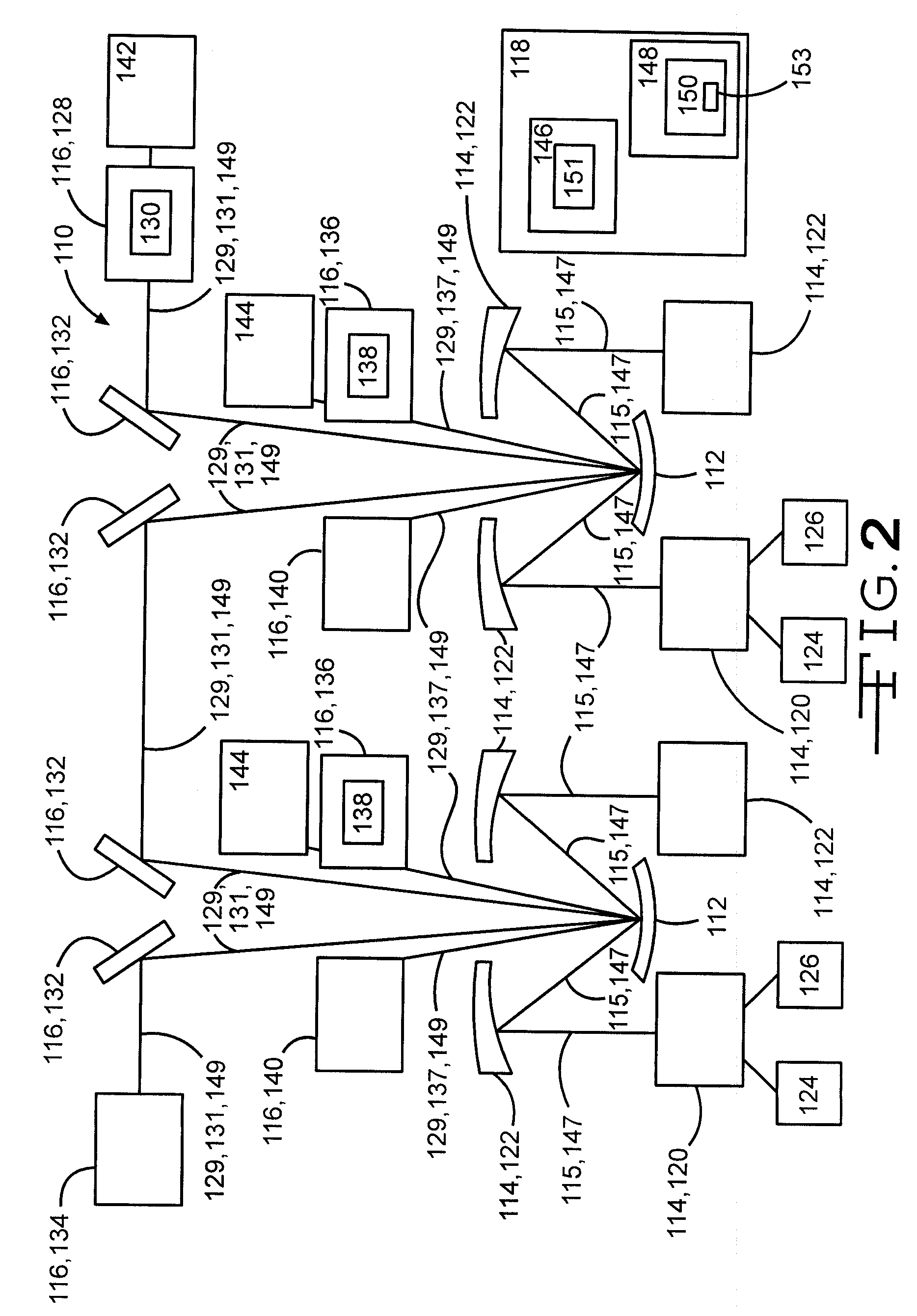Laser safety system
a safety system and laser technology, applied in the field of laser safety systems, can solve the problems of high intensities within the gain material, eventual catastrophic destruction of the crystal, and the risk of catastrophic failure of the disk/crystal within the high-power resonator, so as to reduce the probability of multiple disk failure, and reduce the number of laser parts
- Summary
- Abstract
- Description
- Claims
- Application Information
AI Technical Summary
Benefits of technology
Problems solved by technology
Method used
Image
Examples
Embodiment Construction
[0015]The following detailed description is of the best currently contemplated modes of carrying out the disclosure. The description is not to be taken in a limiting sense, but is made merely for the purpose of illustrating the general principles of the disclosure, since the scope of the disclosure is best defined by the appended claims.
[0016]FIG. 1 illustrates a simplified box diagram of one embodiment of a laser safety system 10. The laser safety system 10 may comprise at least one gain module 12, at least one input device 14, at least one output device 16, and at least one computer 18. The at least one gain module 12 may comprise at least one thin laser disk. The at least one input device 14 may comprise one or more pump modules 20 and / or one or more pump mirrors 22. A reading device 24 and / or a detection device 26 may be in communication with the at least one input device 14. The at least one output device 16 may comprise any of a main resonator outcoupler 28, comprising a parti...
PUM
| Property | Measurement | Unit |
|---|---|---|
| power | aaaaa | aaaaa |
| discharge power level | aaaaa | aaaaa |
| discharge power | aaaaa | aaaaa |
Abstract
Description
Claims
Application Information
 Login to View More
Login to View More - R&D
- Intellectual Property
- Life Sciences
- Materials
- Tech Scout
- Unparalleled Data Quality
- Higher Quality Content
- 60% Fewer Hallucinations
Browse by: Latest US Patents, China's latest patents, Technical Efficacy Thesaurus, Application Domain, Technology Topic, Popular Technical Reports.
© 2025 PatSnap. All rights reserved.Legal|Privacy policy|Modern Slavery Act Transparency Statement|Sitemap|About US| Contact US: help@patsnap.com



